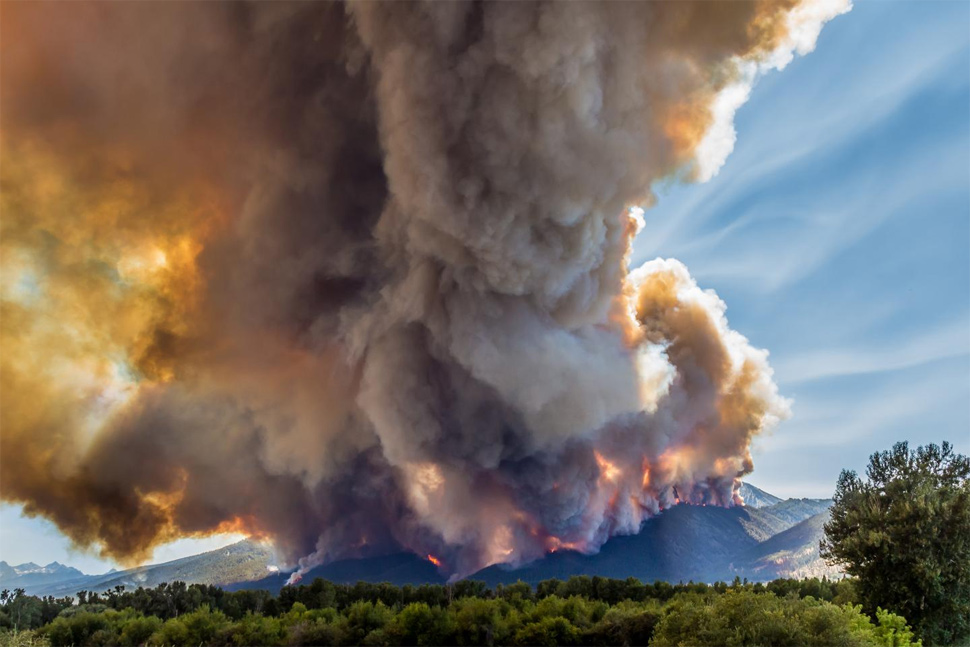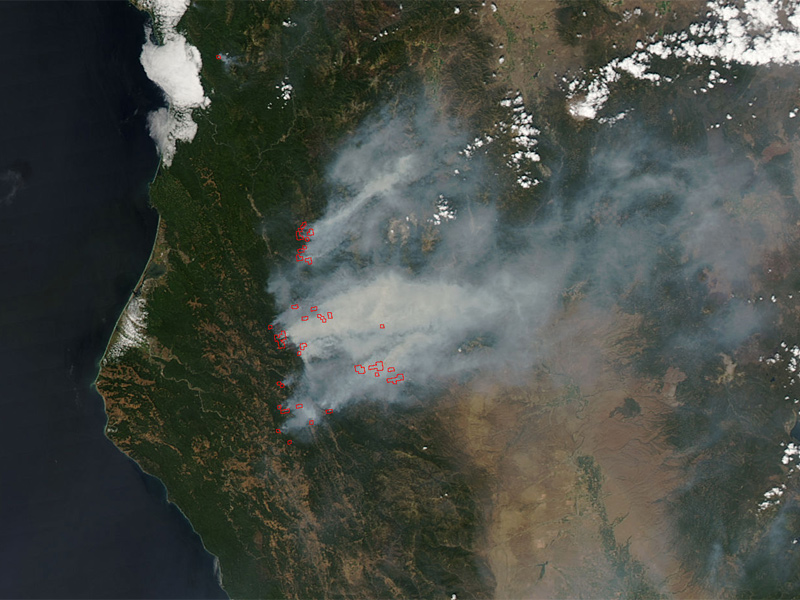
12th October 2016 Climate change has doubled western US forest fires A study by the Earth Institute at Columbia University finds that wildfires in the western US have doubled in area over the last 30 years due to climate change.
A new study concludes that human-induced climate change has doubled the area affected by forest fires in the western U.S. over the last 30 years. According to the study, since 1984 heightened temperatures and resulting aridity have caused fires to spread across an additional 16,000 square miles than they otherwise would have – an area larger than the states of Massachusetts and Connecticut combined. The authors warn that further warming will increase fire exponentially in coming decades. The study appears today in the peer-reviewed journal Proceedings of the National Academy of Sciences. "No matter how hard we try, the fires are going to keep getting bigger, and the reason is really clear," said Park Williams, co-author and bioclimatologist at Columbia University's Lamont-Doherty Earth Observatory. "Climate is really running the show in terms of what burns. We should be getting ready for bigger fire years than those familiar to previous generations." Fires in western forests began increasing abruptly in the 1980s, as measured by area burned, the number of large fires, and length of the fire season. Those increases have since continued, and recently scientists and public officials have in part blamed human-influenced climate change. The new study is perhaps the first to quantify that assertion. "A lot of people are throwing around the words climate change and fire – specifically, last year fire chiefs and the governor of California started calling this the 'new normal,' " said lead author John Abatzoglou, a professor of geography at the University of Idaho. "We wanted to put some numbers on it." Warmth drives fire by drying out the land. Warmer air holds more moisture, and the air sucks it out of plants, trees, and dead vegetation on the ground, as well as soil. Average temperatures in forested parts of the U.S. West have increased by 1.4°C (2.5°F) since 1970, and are expected to continue rising in the future. The resultant drying effect is evident in the expansion of fires. Williams published a study last year showing how climate-driven removal of moisture from land worsened the recent California drought, which was accompanied by widespread fires.
The overall increase in fire since the 1980s is about twice what the researchers attribute to climate change; the rest is due to other factors, they say. One has been a long-term natural climate oscillation over the Pacific Ocean, which has steered storms away from the western United States. Another is firefighting itself. By constantly putting out fires, authorities have allowed areas they "saved" to build up more dry fuel, which later ignites, causing ever more catastrophic blazes. The costs of firefighting have risen sharply in step – last year, the federal government alone spent more than $2.1 billion. "We're seeing the consequence of very successful fire suppression, except now it's not that successful anymore," said Abatzoglou. The authors teased out the effects of climate warming from other factors by looking at eight different systems for rating forest aridity; these included the Palmer Drought Severity Index, the MacArthur Forest Fire Danger Index and the Canadian Forest Fire Danger Rating System. They then compared such measurements with observations of actual fires and large-scale climate models that estimate man-made warming. The crunched data showed that 55% of the increase in fuel aridity expected to lead to fires could be attributed to human-influenced climate change. Climate's role in increasing such aridity has grown since 2000 and will continue to do so, the researchers say. Previous studies have tried to understand the effects of climate on wildfires in parts of Canada, but nothing has been done for the United States on this scale, until now. Globally, wildfires of all kinds have been increasing, often with a suspected climate connection. A huge fire that levelled part of Fort McMurray, Alberta, this May (see video below) is thought to have been the result of a warming trend that is drying out the northern forests. Fires are even spreading beyond, into the tundra, in places where blazes have not been seen for thousands of years. The effects go beyond loss of trees and other vegetation. A 2012 study estimates that smoke from fires worldwide causes long-term health effects that kill some 340,000 people each year. Carbon released to the air adds to the burden of greenhouse gases already there, producing even more warming. Soot settling on snow and ice causes them to absorb more heat and melt faster. Williams believes that ultimately, so many western forests will have burned, they will become too fragmented for fires to spread easily, and the growth in wildfires will cease. But, he explains, "There's no hint we're even getting close to that yet. I'd expect increases to proceed exponentially for at least the next few decades." In the meantime, he says, "It means getting out of fire's way. I'd definitely be worried about living in a forested area with only one road in and one road out."
---
Comments »
|








